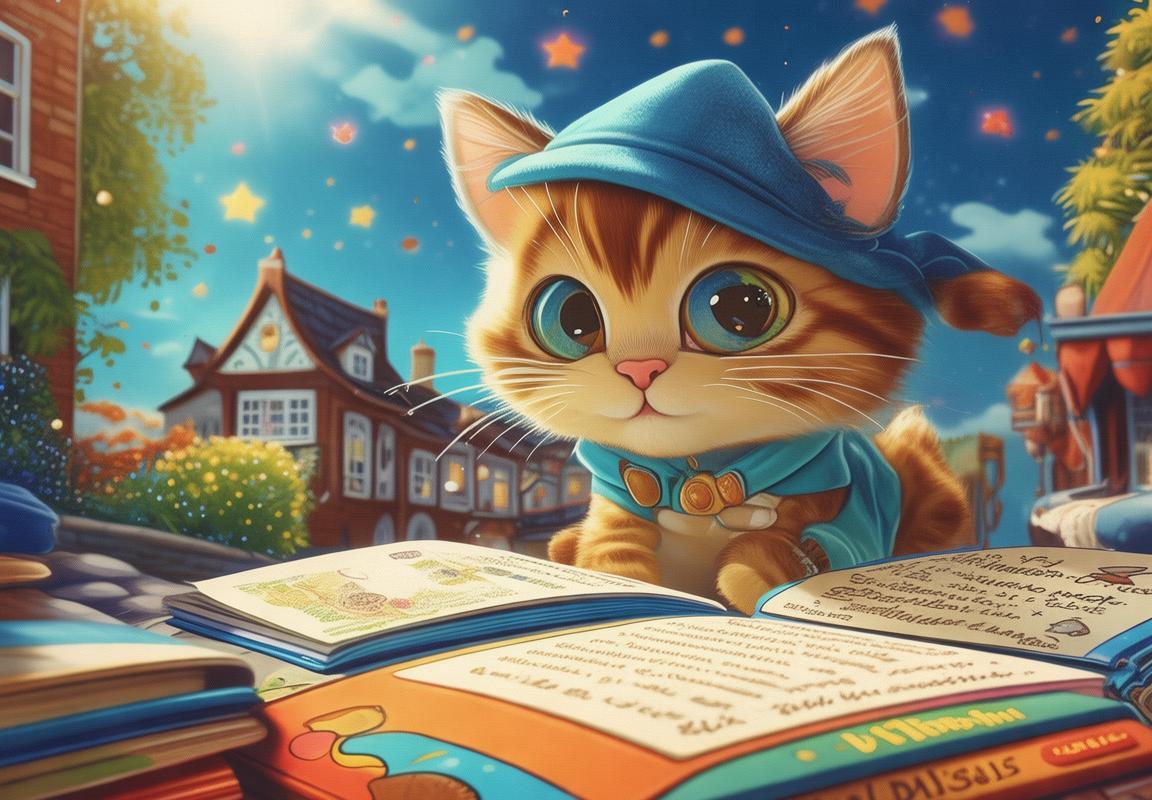Mỗi ngày, chúng ta đều được chứng kiến những màu sắc rực rỡ và sự sống đa dạng xung quanh mình. Những màu sắc này không chỉ làm đẹp cho môi trường mà còn mang lại những cảm xúc và ý nghĩa đặc biệt. Hãy cùng khám phá qua các bài thơ ngắn tiếng Anh về màu sắc của môi trường xung quanh, để cảm nhận và hiểu rõ hơn về thế giới đa dạng và tươi đẹp này.
Mụctiêu
Hello, kids! Let’s learn about the seasons and the activities we do in each season.
Spring
Spring is a beautiful time of the year when everything starts to wake up from winter. The flowers bloom, and the trees are full of green leaves.
- What do we do in spring?
- Plant flowers and trees.
- Go for walks in the park.
- Play outside with friends.
Summer
Summer is hot and sunny. It’s the perfect time for fun activities like swimming and playing games.
- What do we do in summer?
- Go to the beach.
- Have picnics.
- Play in the pool.
Autumn
Autumn, also known as fall, is when the leaves change color and fall from the trees. It’s a beautiful season with cool weather.
- What do we do in autumn?
- Pick apples and pumpkins.
- Go leaf raking.
- Enjoy a hayride.
Winter
Winter is cold, and it often snows. We wear warm clothes and play in the snow.
- What do we do in winter?
- Build snowmen and snowforts.
- Go sledding.
- Have a cozy time by the fireplace.
Remember, each season has its own special activities and beauty. Let’s enjoy them all!

Nộidung
Câu chuyện về chú mèo học tiếng Anh
Chapter 1: The Curious Kitten
Once upon a time, in a cozy little town, there lived a curious kitten named Whiskers. Whiskers was not just any ordinary kitten; he loved to explore and learn new things. One sunny morning, Whiskers found a small, colorful book lying on the ground. The book was filled with words and pictures, and Whiskers was fascinated by it.
Chapter 2: The First Lesson
Whiskers brought the book to his owner, Mrs. purr, who was a kind and loving woman. “What’s this, Whiskers?” she asked, picking up the book. “It looks like it’s a book about language.” Mrs. purr opened the book and started teaching Whiskers the basics of English. “Hello,” she said, pointing to the word on the page. “This is the word for ‘hello’ in English.”
Chapter 3: The Learning Journey
Whiskers was eager to learn. He spent hours each day practicing his new vocabulary. He learned words like “cat,” “food,” “sleep,” and “play.” Mrs. purr would read stories to him in English, and Whiskers would listen intently, trying to understand every word.
Chapter 4: The Big Adventure
One day, Whiskers decided it was time for a big adventure. He put on his little blue hat and set off to explore the town. As he wandered through the streets, he greeted the other animals with “hello” and “good morning.” The birds chirped back, and the dogs barked in reply.
Chapter 5: The Language of Love
Whiskers met a little dog named Max, who was having trouble finding his way home. Whiskers used his English skills to help Max. “Where’s your home?” he asked. Max pointed and said, “That way!” Whiskers led Max back to his house, and the two friends became the best of friends.
Chapter 6: The Final Lesson
Whiskers realized that learning English had not only helped him make new friends but also made him feel more connected to the world. He continued to practice his language skills and even taught other animals in the neighborhood.
Chapter 7: The Happy Kitten
Whiskers lived a happy life, exploring new places and learning new things every day. He had proven that with curiosity and determination, even a little kitten could achieve big dreams.
Kết thúc câu chuyện về chú mèo học tiếng Anh, Whiskers đã học được rằng với tò mò và quyết tâm, bất kỳ con mèo nào cũng có thể đạt được những ước mơ lớn.
Trò chơi thi đấu trả lời câu hỏi tiếng Anh về động vật
Rule 1: Each player takes turns asking questions about animals in English.
Rule 2: The other player must answer with a “yes” or “no.”
Rule 3: If the player guesses the animal correctly, they score a point.
Examples of Questions:
- “Does this animal have fur?” (Yes/No)
- “Can this animal fly?” (Yes/No)
- “Is this animal found in the ocean?” (Yes/No)
Nội dung học về biển và động vật nước bằng tiếng Anh
Lesson 1: The Ocean
- Objective: Learn about the ocean and its importance.
- Activities:
- Watch a video about the ocean.
- Draw a picture of the ocean.
- Discuss the creatures that live in the ocean.
Lesson 2: Sea Creatures
- Objective: Learn the names of sea creatures and their characteristics.
- Activities:
- Read a book about sea creatures.
- Create a poster of sea creatures.
- Role-play being different sea creatures.
Lesson 3: Ocean Conservation
- Objective: Learn about the importance of ocean conservation.
- Activities:
- Watch a documentary about ocean pollution.
- Create a plan to help protect the ocean.
- Write a letter to a local official about ocean conservation.
Hội thoại về việc nấu ăn đơn giản bằng tiếng Anh cho trẻ em
Child: What are we making today, Mommy?
Mommy: We’re making a simple sandwich. Do you want to help?
Child: Yes! What do we need?
Mommy: We need bread, butter, cheese, and ham. Let’s get them from the fridge.
Child: Okay! (Child opens the fridge and takes out the ingredients.)
Mommy: Now, let’s spread the butter on the bread. Be careful not to make it too thick.
Child: Okay! (Child spreads the butter on the bread.)
Mommy: Now, add the cheese and ham. Make sure to cover the whole bread.
Child: Okay! (Child adds the cheese and ham.)
Mommy: Finally, let’s put the other piece of bread on top. Now we have a sandwich!
Child: Yummy! (Child takes a bite.)
Bài tập viết tiếng Anh cho trẻ em, sử dụng các dấu chấm và đường đơn giản
Activity 1: Dot-to-Dot
- Draw a simple picture with dots and ask the child to connect the dots to reveal the picture.
- Example: Draw a circle of dots and ask the child to connect them to make a circle.
Activity 2: Line Drawing
- Draw a simple line and ask the child to follow the line with their finger or a crayon.
- Example: Draw a zigzag line and ask the child to trace it.
Activity 3: Dot Painting
- Give the child a piece of paper with dots and let them color the dots to create a picture.
- Example: Give the child a paper with dots in the shape of a flower and let them color it.
Nội dung học về sao và mặt trăng bằng tiếng Anh
Lesson 1: The Sun
- Objective: Learn about the sun and its importance.
- Activities:
- Watch a video about the sun.
- Draw a picture of the sun.
- Discuss the sun’s role in our lives.
Lesson 2: The Moon
- Objective: Learn about the moon and its phases.
- Activities:
- Read a book about the moon.
- Create a poster of the moon’s phases.
- Role-play being the moon and changing its phases.
Lesson 3: Space Exploration
- Objective: Learn about space exploration and the solar system.
- Activities:
- Watch a documentary about space exploration.
- Create a model of the solar system.
- Discuss the possibility of life on other planets.
Trò chơi đoán đồ vật từ âm thanh tiếng Anh
Rule 1: The player who is “it” thinks of an object and makes a sound associated with it.
Rule 2: The other players must guess the object based on the sound.
Examples of Sounds:
- Meow: The sound of a cat.
- B: The sound of a dog.
- Cluck: The sound of a chicken.
- Quack: The sound of a duck.
Câu chuyện về trẻ em đi du lịch đến sao bằng tiếng Anh
**Once upon a time, in a small village, there was a little girl named Luna. Luna loved to dream about space and the stars. One night, as she looked up at the sky, she wished to visit the stars.
Chapter 1: The Star wish
Luna made a wish on a shooting star and fell asleep. When she woke up, she found herself floating in space. She looked around and saw a beautiful, twinkling star.
**Chapter 2: The Star’s

Cáchchơi
Cách Chơi Trò Chơi Tìm Từ ẩn liên quan đến Môi trường xung quanh
- Chuẩn bị:
- Hình ảnh: Chọn một bộ hình ảnh đa dạng về môi trường xung quanh, bao gồm các chủ đề như cây cối, động vật, thiên nhiên, và các hiện tượng thời tiết.
- Từ ẩn: Lên danh sách các từ tiếng Anh liên quan đến môi trường, chẳng hạn như tree, flower, sun, rain, cloud, river, mountain, etc.
- Bản in hình ảnh: In các hình ảnh và từ ẩn ra giấy.
- Bước 1: Giới thiệu và Hướng dẫn
- Giới thiệu trò chơi cho trẻ em bằng cách nói: “Hôm nay chúng ta sẽ chơi một trò chơi tìm từ rất thú vị!”
- Giải thích mục tiêu của trò chơi: “Chúng ta sẽ tìm các từ ẩn trong hình ảnh về môi trường xung quanh.”
- Bước 2: Chơi Trò Chơi
- Trẻ em được chia thành các nhóm nhỏ hoặc chơi cá nhân.
- Mỗi nhóm hoặc trẻ em được phát một bộ hình ảnh và danh sách từ ẩn.
- Hướng dẫn trẻ em: “Hãy tìm tất cả các từ ẩn trong hình ảnh của bạn.”
- Bước 3: Kiểm tra và Giải thích
- Khi trẻ em tìm thấy một từ, họ cần đọc to và kiểm tra với bạn.
- Nếu từ chính xác, bạn có thể đánh dấu hoặc đánh dấu điểm cho trẻ em.
- Nếu từ không chính xác, bạn có thể giải thích và giúp trẻ em tìm từ đúng.
- Bước 4: Thưởng Phạt và Kết Thúc
- Sau khi tất cả các từ đã được tìm thấy, bạn có thể thưởng cho trẻ em bằng cách trao giải hoặc điểm số.
- Kết thúc trò chơi bằng cách tổng kết các từ đã tìm thấy và nhấn mạnh tầm quan trọng của môi trường xung quanh.
- Bước 5: Hoạt động Thực Hành
- Sau khi trò chơi kết thúc, bạn có thể tổ chức một hoạt động thực hành, chẳng hạn như:
- Vẽ Hình: Yêu cầu trẻ em vẽ một bức tranh về môi trường xung quanh mà họ đã tìm thấy các từ.
- Nói Chuyện: Khuyến khích trẻ em kể về một kì nghỉ đáng nhớ ở một nơi đẹp trong tự nhiên.
Lưu Ý
- Dễ Dàng và Hấp Dẫn: Chọn hình ảnh và từ ẩn dễ hiểu và hấp dẫn để trẻ em hứng thú tham gia.
- Hỗ Trợ: Đảm bảo rằng trẻ em nhận được sự hỗ trợ và hướng dẫn cần thiết trong suốt trò chơi.
- Thưởng Phạt: Sử dụng thưởng phạt hợp lý để khuyến khích trẻ em tham gia tích cực.
Throught this game, children will not only learn new vocabulary but also develop their observation skills and appreciation for the natural world. Enjoy the learning journey! 🌳🌸🌊

Lợiích
Lợi ích của các bài tập viết chữ tiếng Anh có âm thanh đáng yêu cho trẻ em 4-5 tuổi
- Tăng cường khả năng nhớ và nhận diện âm thanh:
- Các bài tập với âm thanh đáng yêu giúp trẻ em nhận diện và nhớ rõ các âm thanh trong tiếng Anh, từ đó giúp chúng học từ và câu dễ dàng hơn.
- Khuyến khích sự hứng thú với học tập:
- Âm thanh và hình ảnh đáng yêu sẽ làm tăng sự hứng thú của trẻ em với các bài tập viết chữ, tạo ra một môi trường học tập tích cực và thú vị.
- Phát triển kỹ năng viết:
- Qua các bài tập viết chữ, trẻ em không chỉ học được các từ tiếng Anh mà còn được rèn luyện kỹ năng viết, từ viết các từ đơn giản đến các đoạn văn ngắn.
- Giúp trẻ em tự tin hơn:
- Khi trẻ em viết được các từ tiếng Anh và nghe thấy âm thanh chính xác, chúng sẽ cảm thấy tự tin hơn trong việc sử dụng ngôn ngữ này.
- Hỗ trợ sự phát triển ngôn ngữ:
- Việc viết và nghe âm thanh tiếng Anh giúp trẻ em phát triển kỹ năng ngôn ngữ một cách toàn diện, bao gồm cả nghe, nói, đọc và viết.
- Thích ứng với các tình huống thực tế:
- Các bài tập viết chữ kết hợp âm thanh giúp trẻ em quen thuộc hơn với các tình huống thực tế, chẳng hạn như giao tiếp với người nước ngoài hoặc đọc các thông báo tiếng Anh.
- Phát triển trí tuệ và cảm xúc:
- Quá trình học viết với âm thanh không chỉ giúp trẻ em phát triển trí tuệ mà còn giúp chúng hiểu và cảm nhận sâu hơn về ngôn ngữ, từ đó nâng cao khả năng giao tiếp.
- Cung cấp trải nghiệm học tập đa dạng:
- Việc kết hợp âm thanh và hình ảnh tạo ra một trải nghiệm học tập đa dạng, giúp trẻ em không bị nhàm chán và luôn muốn học thêm.
- Hỗ trợ giáo viên và phụ huynh:
- Các bài tập này cũng giúp giáo viên và phụ huynh dễ dàng theo dõi tiến độ học tập của trẻ em, từ đó có thể điều chỉnh phương pháp giảng dạy phù hợp.
- Nâng cao khả năng tư duy:
- Quá trình viết và đọc các từ tiếng Anh với âm thanh giúp trẻ em phát triển khả năng tư duy logic và phân tích, rất quan trọng trong việc học ngôn ngữ và các môn học khác.
Bằng cách kết hợp âm thanh đáng yêu vào các bài tập viết chữ, chúng ta không chỉ giúp trẻ em học tiếng Anh một cách hiệu quả mà còn mang lại nhiều lợi ích tích cực cho sự phát triển toàn diện của họ.
